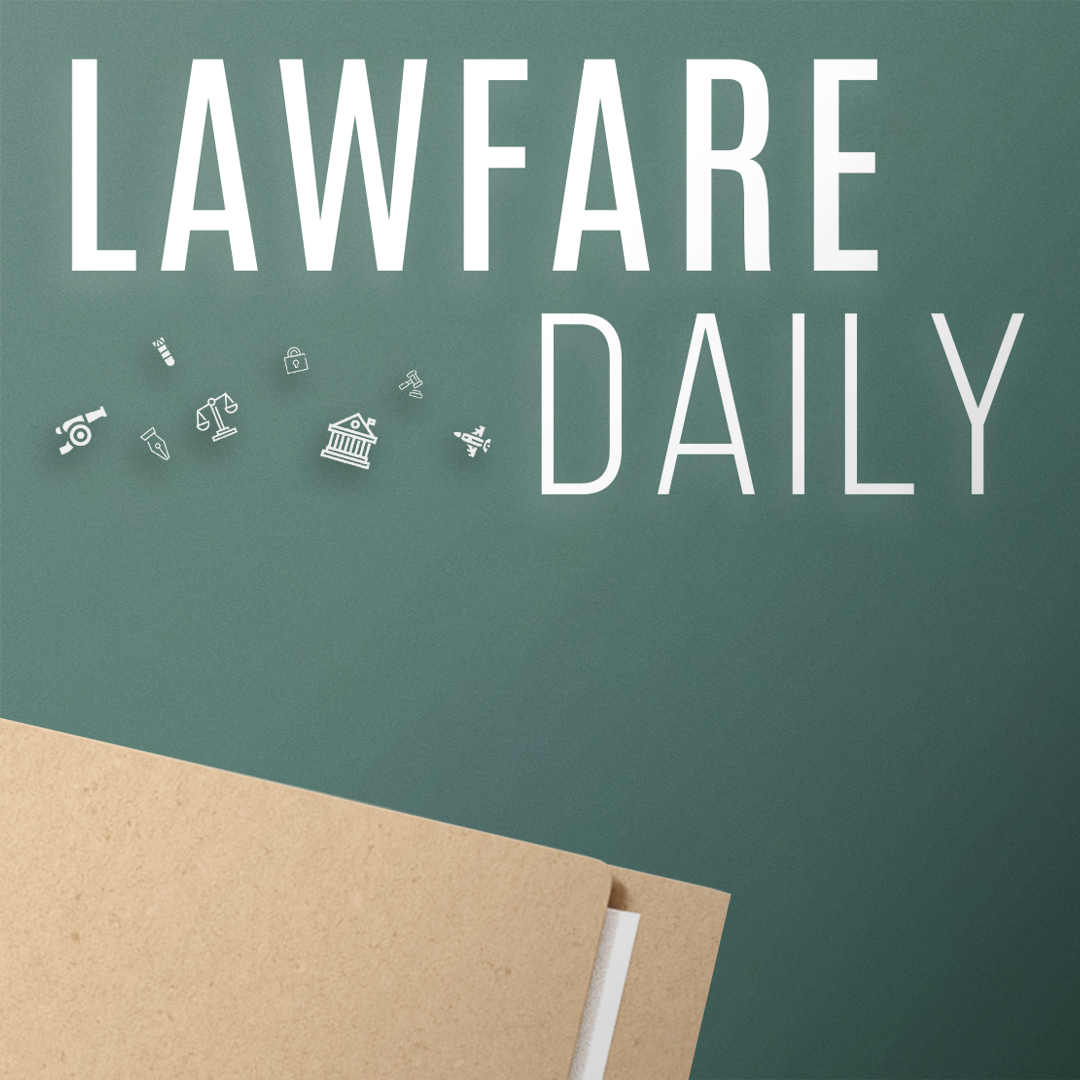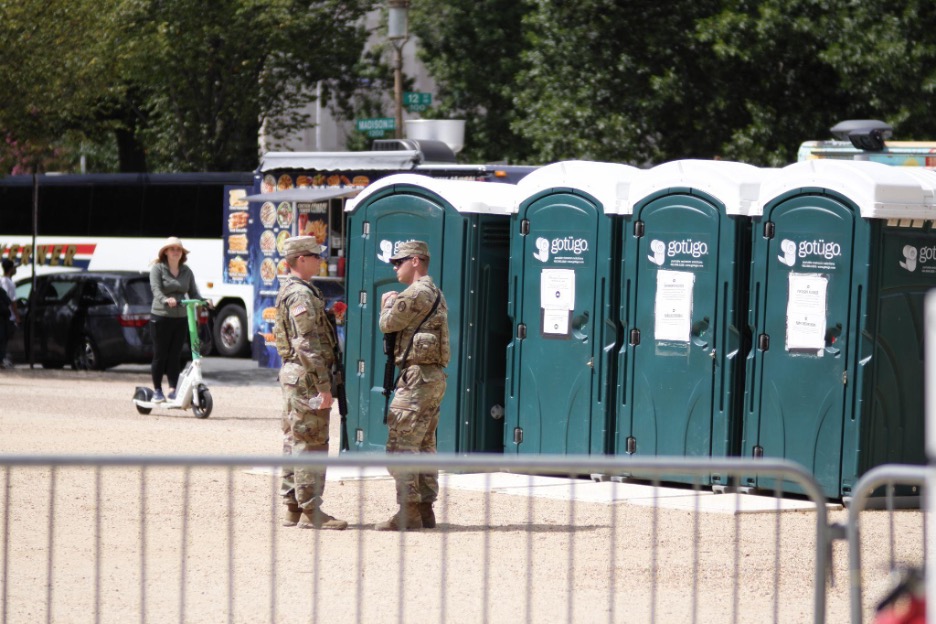Temporary Blocks: What You Need to Know About TROs and Preliminary Injunctions

Published by The Lawfare Institute
in Cooperation With

In dozens of lawsuits challenging Trump administration actions, plaintiffs have asked courts for emergency help. These individuals and organizations—fired federal employees, HIV prevention advocates, immigrants, transgender service members, and more—say they are currently facing “irreparable harm” from the government that must be stopped right away while their lawsuit is in process. But what are these provisional-relief requests, exactly? And how do they work?
The bottom line is that courts typically do not grant requests for emergency relief at the start of a lawsuit. Instead, they wait to decide what remedies a plaintiff deserves, if any, until after each side makes its legal arguments and introduces its evidence, including evidence obtained from the other side through the discovery process. With all of this information in hand, a judge or a jury might order a defendant to pay the plaintiff for any damage caused and a judge might even order the defendant to take certain actions, like reinstating a former employee or pause its construction until safety problems have been addressed.
But in very limited circumstances, waiting will result in harm that cannot be repaired by financial compensation to a plaintiff when a case is over. Imagine a situation in which a former employee threatens to publicize your company’s trade secrets or a neighbor plans to chop down a rare old tree that is on your property, not theirs. If a court can’t press pause while your lawsuit is pending, you might win money damages later, but the loss can never really be repaired because your trade secrets were the key to your business and the old tree was irreplaceable.
For this reason, courts have historically been able to grant some forms of provisional, or interim, relief to temporarily block an imminent threat. In U.S. federal district courts, this often takes the form of a temporary restraining order, commonly called a TRO, followed by a preliminary injunction. (Orders like this that require a party to do, or not do, something during or after a lawsuit are one type of “equitable relief.”)
A TRO is exactly what it sounds like—a temporary order that restrains the defendant in some way, either to do or not do something. TROs are short term, lasting no more than 14 days unless both sides agree to a longer time period or there is “good cause” for an extension. Under Rule 65 of the Federal Rules of Civil Procedure, which sets out the rules for a TRO and preliminary injunction, a court can issue a TRO ex parte—meaning the court does not even have to hear from the other side before issuing the order—though in many cases, including recent challenges to Trump administration acts, both sides present their arguments to the court (as in, for example, the government’s opposition to the plaintiffs’ TRO request on a federal funding freeze). The rules require a court to include in any TRO specific facts showing why the requesting party will suffer an irreparable injury, loss, or damage if the TRO is not granted.
But a TRO is essentially a short-term, partial Band-Aid for a party that fears irreparable harm, since lawsuits ordinarily last far longer than two weeks. For protection from irreparable harm throughout the litigation, a party will ask for a preliminary injunction in addition to or instead of a TRO. (That choice depends on how quickly the harm is likely to occur—if it’s right away, the party will usually request a TRO to keep the status quo in place while the court decides whether to grant a preliminary injunction.) Unlike when granting a TRO, a court may impose a preliminary injunction only after the party that would be restrained has a chance to argue that the preliminary injunction should not be issued.
Because a preliminary injunction may remain in place for months or even years while a lawsuit is pending, a court will first consider whether the plaintiff is likely to win the case. In this likelihood-of-success-on-the-merits assessment, a court will evaluate both sides’ legal arguments and may even have a hearing, like a mini trial, at which both sides have a chance to present evidence supporting their positions. If a plaintiff can’t show it is likely to win, the court will ordinarily deny the preliminary injunction.
A court also will consider whether the plaintiff will suffer irreparable harm if the preliminary injunction is not issued. A court must consider, too, any harm the defendant will suffer if the injunction is granted.
As it makes this “balance of equities” determination, a court also will decide whether the preliminary injunction is in the public interest. In a 2008 environmental case, for example, the Supreme Court concluded that although marine mammals might be hurt as a result of planned Navy exercises involving sonar, stopping those exercises while the litigation was pending would cause greater harm to the Navy, which had determined that active-sonar training was needed to ensure the safety and effectiveness of its submarine-fighting fleet.
So, what does this look like in the current wave of litigation against the Trump administration? Consider birthright citizenship. In one of the challenges to the Trump executive order, Washington and other states asserted that “[a]bsent immediate relief, the Citizenship Stripping Order will work substantial and irreparable harm to the Plaintiff States and their residents.” They explained that more than 1,100 children of undocumented parents are born in their states every month and, if those children are denied citizenship, the states would incur “immediate, substantial, and unbudgeted expenditures to implement the massive changes required to state programs and systems, none of which the Plaintiff States can recoup through this case or otherwise.” Bolstering their argument for immediate action by the court, the states added that “children born in the Plaintiff States will soon be rendered undocumented, subject to removal or detention, and many stateless.”
The federal district court agreed and issued a TRO two days after the states made their request, finding that the harms described by the plaintiffs “are immediate, ongoing, and significant, and cannot be remedied in the ordinary course of litigation.” Two weeks later, the same court issued a preliminary injunction, having determined the states were likely to succeed on their claim that the executive order violates the U.S. Constitution and that the states “are likely to suffer irreparable economic harm” if the executive order takes effect, including increased “unrecoverable costs for ... essential medical care and social services.”
The court also found that the undocumented pregnant women whose case had been consolidated with the states’ also risked irreparable harm because their future newborns would be denied citizenship and immediately subject to deportation, also forcibly separating some of their families. And in balancing the equities, the court concluded that “the Government has no legitimate interest in enforcing an Order that is likely unconstitutional and beyond its authority.” The court added that the public interest would be protected by ensuring that “executive fiat” not imperil the rule of law.
In the run of other recent lawsuits, many plaintiffs have likewise asked courts to protect the status quo and stop the government from taking the challenged action while their cases are pending. These are quick turnarounds given the urgent stakes, including at least one middle-of-the-night order. Courts have responded in a variety of ways, including with rulings that (a) grant a TRO and then dissolve it days later after determining the court lacked jurisdiction over a union challenge to the federal “fork in the road” offer; (b) grant and then extend a TRO prohibiting the Trump administration from sending home U.S. Agency for International Development employees abroad but then deny a preliminary injunction after full briefing and multiple hearings; (c) deny a TRO for lack of irreparable harm but leave open the possibility of a preliminary injunction in a challenge to the Department of Government Efficiency (DOGE)’s access to internal agency data and other Elon Musk and DOGE actions; (d) issue a TRO that was proposed and agreed to by FBI agents, their union, and the government not to publicly share a list of agents involved in the Jan. 6 investigations; (e) order the Trump administration to obey its TRO on the federal funding freeze directive and to report biweekly on its disbursement of National Institutes of Health funds; and (f) grant a preliminary injunction to block most parts of an executive order ending federal support for programs and grants related to diversity, equity, and inclusion but denied a TRO because it was unnecessary in light of the preliminary-injunction grant.
So what happens next? In most litigation, appeals have to wait until after a case is fully concluded. This is generally thought to be more efficient so that litigation isn’t paused partway through while individual issues are appealed, as the case may settle or those issues may turn out to be unimportant by the end. By contrast, a preliminary injunction can be appealed, as provided by 28 U.S.C. 1292. This appeals process is happening in one of the birthright citizenship cases, among others. Appeals of TROs are less typical, but they can happen (usually when a court is asked to treat a TRO as a preliminary injunction), as in current litigation over President Trump’s removal of the head of the federal Office of Special Counsel.
Stepping back, the current litigation landscape of TROs and preliminary injunctions may seem quite extraordinary, from the cases discussed above to numerous others ranging from blocking the Bureau of Prisons from moving three transgender women to a men’s prison to keeping an official in place on the Merit Systems Protection Review Board. But considered in context, these many provisional orders suggest that even more extraordinary are the government’s threatened actions, both in their likely unlawfulness and their potential for irreparable harm.




